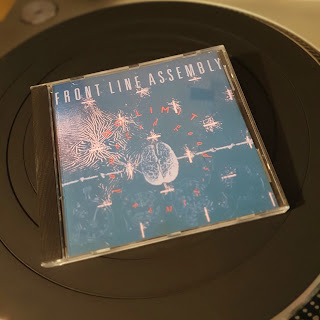I bought this copy of the standard UK vinyl from a charity shop in Manchester in 2014. The record and sleeve are in very good condition and there is no way I can grumble having only paid a couple of pounds for it.
This is the first album where Eurythmics began to push the synths to one side and move in a different direction. Obviously, I've never been a fan of such betrayal the move away from electronic music, but lots of groups seem have done it.
Depeche Mode and a-ha decided to move into rock music to enhance their credibility, but ultimately jettisoned what made them good in the first place. Heaven 17 resorted to a blue eyed soul pastiche in a desperate (but ultimately futile) attempt to salvage their careers and Orchestral Manoeuvres in the Dark flirted with 'Britpop' for one album before deciding to call it a day.
The cynic in me thinks that Eurythmics move to a more rock orientated sound and roping in established artists such as Stevie Wonder, Elvis Costello and Aretha Franklin was merely a calculated effort to sell more records in America. If this was the aim, then the band succeeded as the album recorded sales of over 1 million in the USA
For an electronic music enthusiast, things don't get off to the most promising start with the guitars, drums and brass of the first track "Would I Lie To You?". I can't warm to "I Love You Like A Ball and Chain" and whilst "Sisters Are Doin' It For Themselves" is undoubtedly a fantastic composition, it's execution is just too conventional for me. Conversely, "It's Alright Baby's Coming Back" is more 'electronic' than I remember, even if it is dragged down by the flaccid rhythm section of drums and bass guitar.
Synths still hold strong and dominate songs such as "There Must Be An Angel (Playing With My Heart)" and an Emulator II gets a good workout on "Conditioned Soul". So, whilst its true to say the sonic pallet has wandered into mainstream rock, the synths haven't been jettisoned completely. This is a hybrid album that served as a precursor for the horrors to come. 3/5







